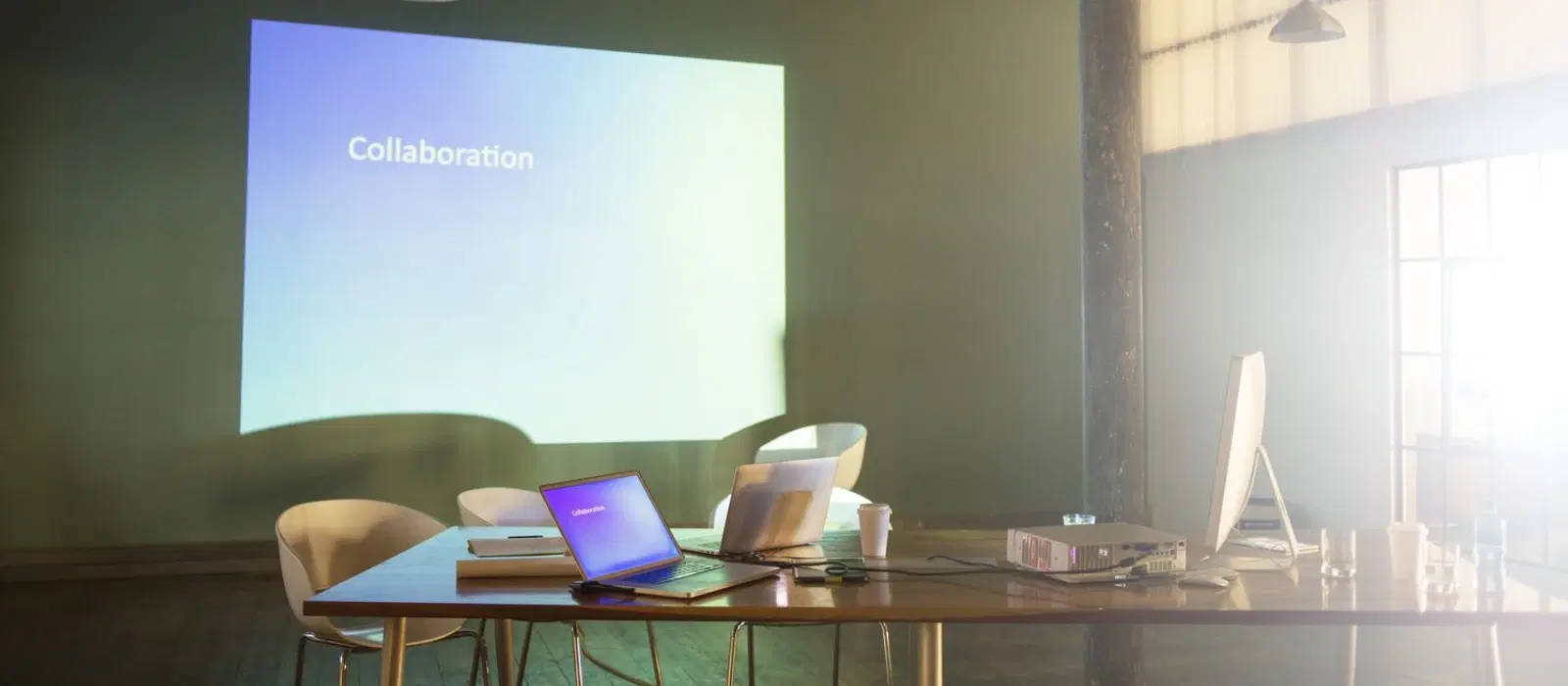
Consumer Electronics
•05 min read

Connecting your laptop to a projector can significantly enhance presentations, movie nights, and gaming experiences. Whether you’re in a conference room, classroom, or home theater, knowing how to set up your laptop with a projector is a valuable skill. This guide will help you understand the different types of cables, the setup process, and how to troubleshoot common issues.
An HDMI cable is the most common and easiest way to connect a laptop to a projector. It transmits both high-definition video and audio through a single cable, making it a convenient option.
Steps to Connect Using an HDMI Cable:
Identify the HDMI port on your laptop and projector.
Plug one end of the HDMI cable into the laptop and the other end into the projector.
Power on the projector and select the appropriate HDMI input source.
On your laptop, press Windows + P keys (for Windows) or go to System Preferences > Displays (for Mac) to configure the display settings.
If you’re working with an older projector, a VGA cable might be necessary. VGA cables only transmit video signals.
Instructions for Connecting Via VGA:
Locate the VGA port on both your laptop and projector.
Connect the VGA cable to both devices securely.
Switch on the projector and select the VGA input source.
Adjust your laptop’s display settings to mirror or extend the screen.
Sometimes, your laptop might not have the necessary port. In such cases, adapters or converters come in handy.
Types of Adapters:
HDMI to VGA
USB-C to HDMI
Connect the adapter to your laptop, then link the appropriate cable to the projector. This ensures compatibility and smooth transmission of video and audio signals.
Identify the available ports on your laptop and projector to determine the appropriate cable or adapter needed.
Choose the correct cable or adapter that matches the ports of both devices.
Connect the cable securely to both the laptop and projector.
Adjust the projector settings to the correct input source (HDMI, VGA, etc.).
Configure laptop display settings to either duplicate the display or extend it, depending on your preference.
(45)-74f9fffb-62a7-47a7-8714-b26c94ed85c8.png&w=3840&q=75)
Wireless adapters, such as Miracast or Chromecast, provide a clutter-free setup.
Guide on Setting Up a Wireless Connection:
Plug the wireless adapter into the projector’s HDMI port.
Follow the on-screen instructions to connect your laptop to the wireless adapter.
Ensure both devices are on the same Wi-Fi network.
Flexibility and convenience without the need for multiple cables.
Reduced cable clutter for a cleaner setup.
If your projector shows no signal:
Check that all cables are securely connected.
Ensure the correct input source is selected on the projector.
If the display resolution is off:
Adjust the resolution settings on your laptop.
Consider compatibility with older projectors that may not support high resolutions.
If there’s no audio:
Ensure the laptop’s audio settings are routed through the projector.
Use external speakers if the projector doesn’t have built-in audio capabilities.
(44)-b4699c06-32bf-4cfd-a73e-6038a6eb6198.png&w=3840&q=75)
Tata Neu offers express delivery, ensuring you get your cables and adapters when you need them urgently. Same-day delivery is available for orders placed before 4 PM.
No, USB cables are not typically used for video connections; use HDMI or VGA instead.
Use a USB-C to HDMI adapter to connect your laptop to the projector.
Ensure the sound settings are routed through the projector; some projectors may require external speakers for audio output.
An HDMI cable is the best option for high-definition video and audio.
Adjust the display settings on your laptop to 'Extend' instead of 'Duplicate'.
Connecting your laptop to a projector is a straightforward process when you have the right cables and adapters. By following the steps outlined in this guide, you can ensure a smooth and effective setup for any presentation or entertainment purpose. Explore Tata Neu for all your tech needs and take advantage of benefits like NeuCoins rewards, express delivery, and expert support.
While many modern laptops come with HDMI ports, some ultra-thin models might require adapters. It's essential to check your laptop's ports before purchasing cables or projectors. Adapters like USB-C to HDMI or HDMI to VGA can bridge the gap, allowing older projectors to work seamlessly with newer laptops.
Using a projector with a laptop involves determining the type of connection you need, setting up the hardware, and configuring the settings on both devices. It's advisable to familiarize yourself with your projector's remote control and menu options, as these can aid in troubleshooting and optimizing your projection experience.
Customizing your projector display from your laptop is crucial for achieving the best visual experience. Whether you're presenting a PowerPoint in a business meeting or streaming a movie, understanding how to adjust settings like brightness, contrast, and resolution can make a significant difference. Windows and Mac systems offer various display configuration options under their display settings, enabling you to tweak the output to your liking.